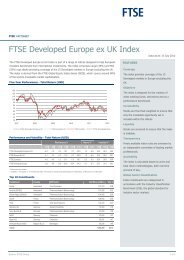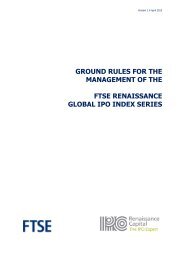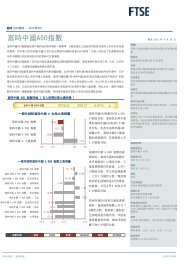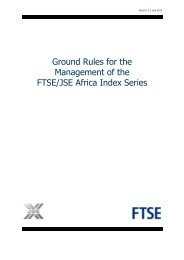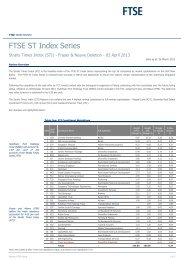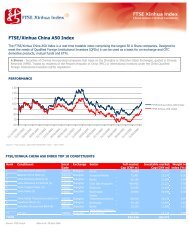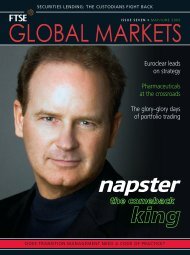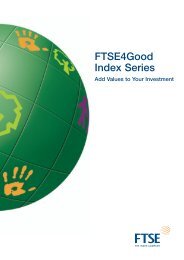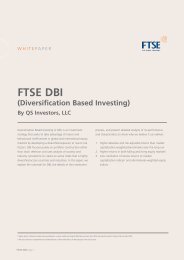Create successful ePaper yourself
Turn your PDF publications into a flip-book with our unique Google optimized e-Paper software.
Incentive Plan to make our products more attractive to new<br />
customers from the Pacific Rim. We also launched a<br />
telecommunications hub in Singapore designed to make<br />
our markets more cost-effective and accessible.”<br />
To unseasoned observers, these appear small steps to<br />
cross huge chasms. But the significance of the relationships<br />
has not been lost in the region itself, which has been awash<br />
with a growing network of strategic alliances including not<br />
only exchanges but also regulators and governments. It<br />
indicates that the CME is playing for big stakes in a<br />
politically very savvy regional league. Just a few examples of<br />
extant market-to-market arrangements are the MOU<br />
between the Online Commodity Exchange of India and<br />
Malaysia Derivatives Exchange, the strategic partnering<br />
arrangements between Singapore Exchange and Bursa<br />
Malaysia, and the understanding between Sydney Futures<br />
Exchange and Hong Kong Exchanges and Clearing Ltd.<br />
Each relationship sees itself as a major power hub with<br />
much broader regional pretensions.<br />
One of the forces driving this interest in regional<br />
agreements has been structural change in the exchanges.<br />
More and more institutions in the region have taken the<br />
demutualisation route and, at the same time, derivatives<br />
and securities businesses have been rationalised. Everyone<br />
in the Asia Pacific region, it seems, is learning to play the<br />
CME’s game. In Singapore, Hong Kong and Korea, for<br />
example, the separate exchanges have been combined into<br />
a single market operator. A similar example is the<br />
Australian Stock Exchange, which recently announced<br />
plans to move its futures, options and stocks products onto<br />
a single technology platform by 2006. This trend has<br />
encouraged these consolidated, for-profit entities to focus<br />
on the opportunity to grow their share of regional and<br />
indeed world trading.<br />
For the time being, in Asia, the CME is playing the role<br />
of learned benefactor. In a speech earlier in the year to the<br />
SSE, for example, Donohue had stated that the CME’s<br />
purpose “is not to threaten or overtake the internal<br />
development of China’s emerging futures markets.”Just so.<br />
It is an unusually benign statement from a highly<br />
competitive operator and most people agree that<br />
competition made the CME. The exchange’s ability to<br />
successfully respond to the challenge from its European<br />
competitors; its willingness to ruthlessly cut costs so that<br />
it could equally ruthlessly cut prices; and its single<br />
minded focus on global expansion, has forged the<br />
successful entity that it is today. A number of questions<br />
however, still hang over the exchange. Will it merge with<br />
the CBOT? Will it acquire in Europe or Asia, and if it does<br />
acquire, will it buy another derivative exchange?<br />
Donohue is not drawn on specifics and instead<br />
emphasises that the CME’s merger and acquisition<br />
strategy is not limited to exchanges, securities or<br />
otherwise.“We have a well thought out strategy and if we<br />
were to do something it would be to create shareholder<br />
value, not because of someone’s idea of what we should<br />
be.”That’s telling us.<br />
<strong>FTSE</strong> GLOBAL MARKETS • JULY/AUGUST 2005<br />
Looking South on Madison, Chicago<br />
73



